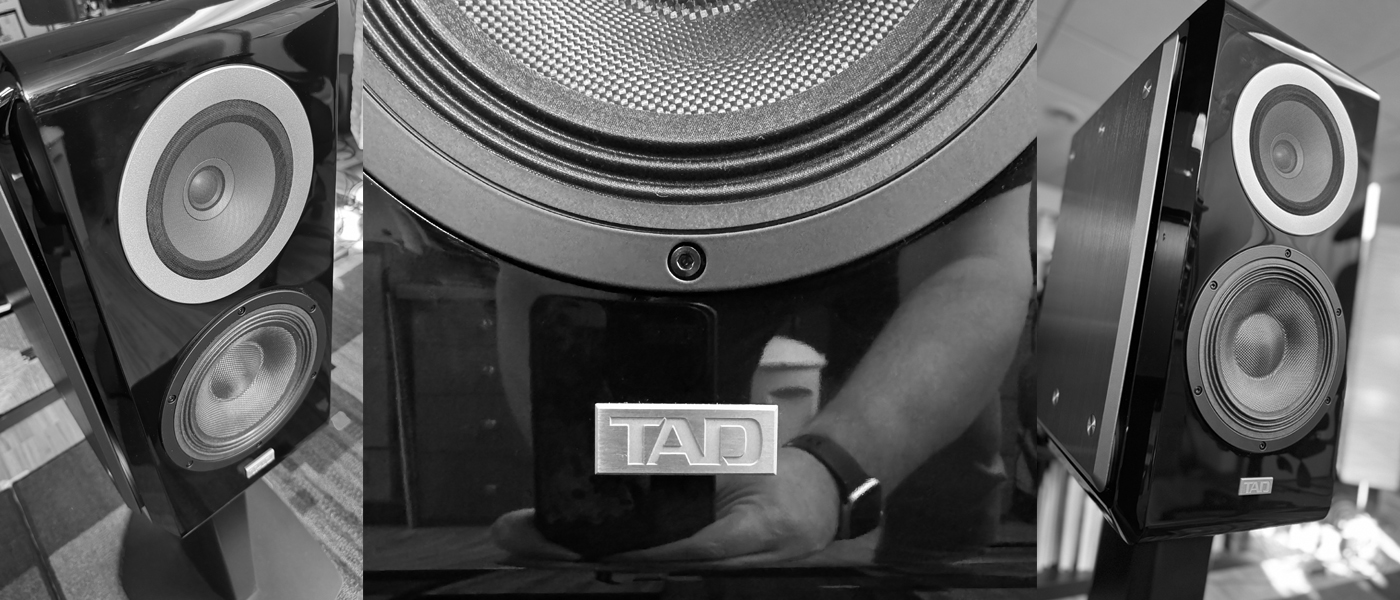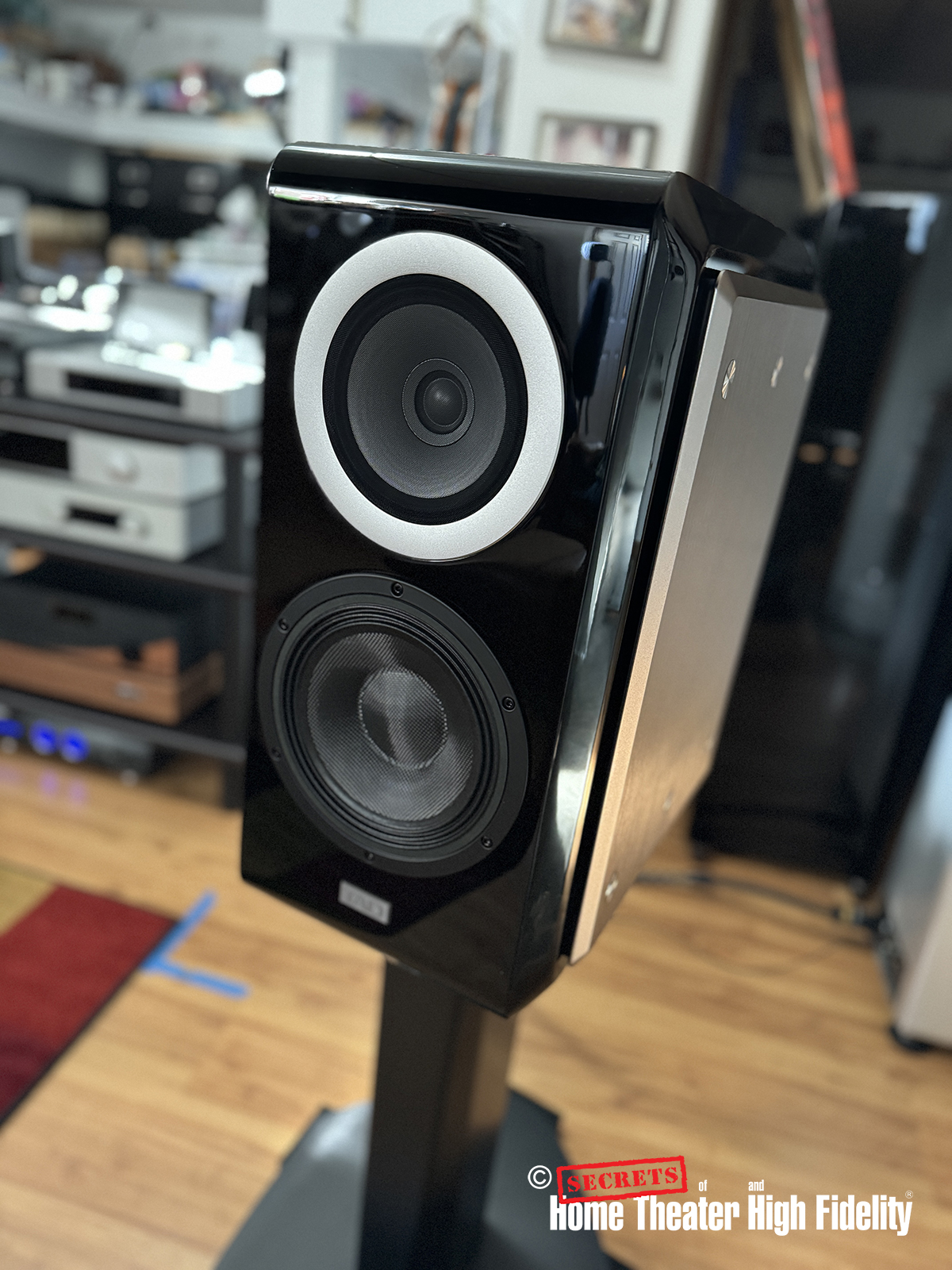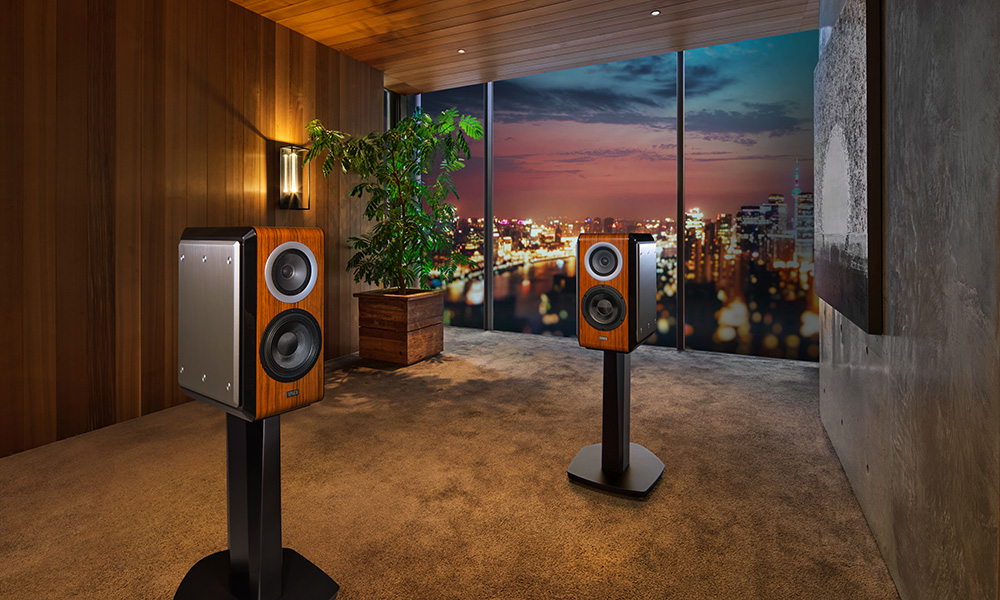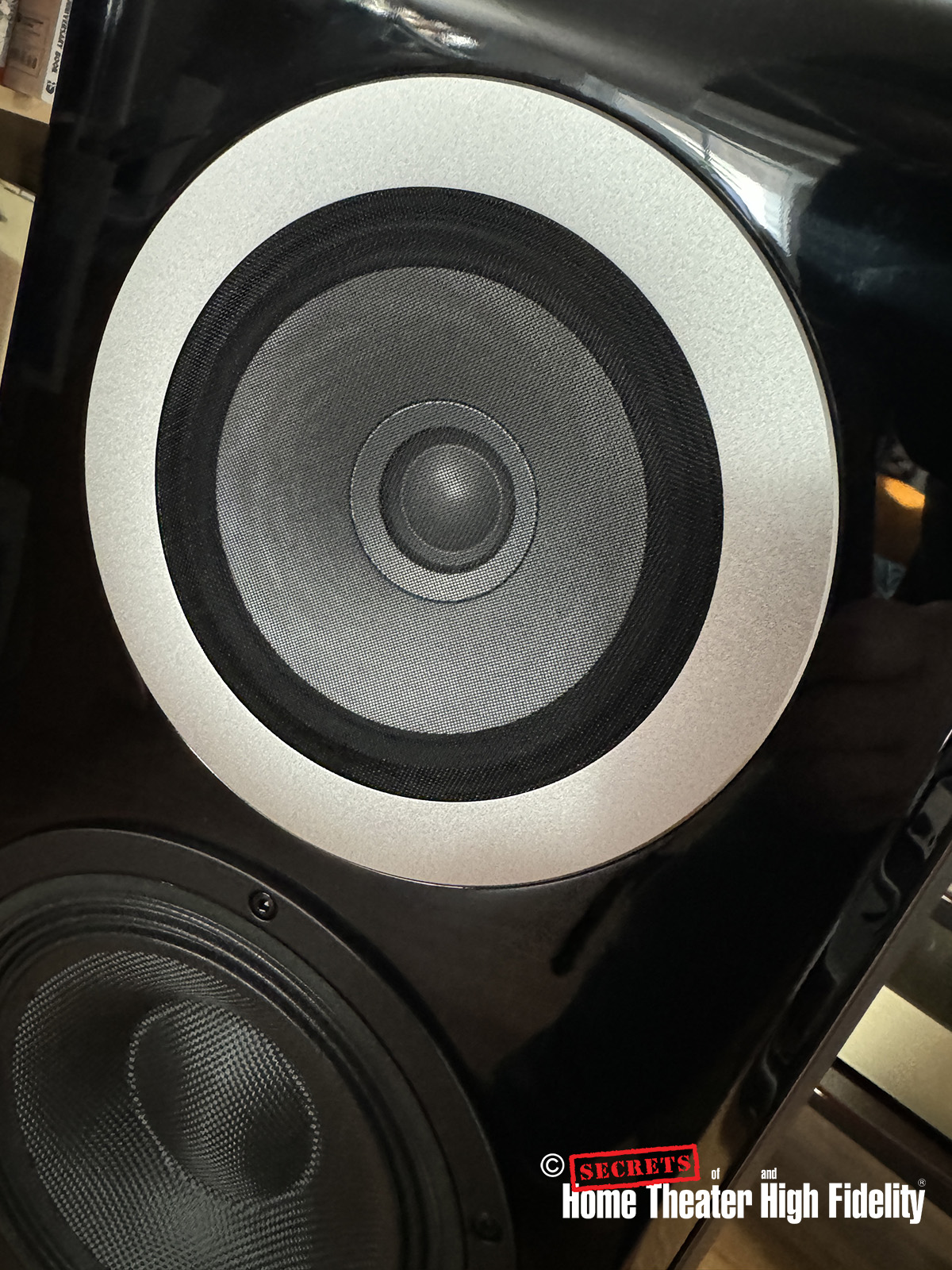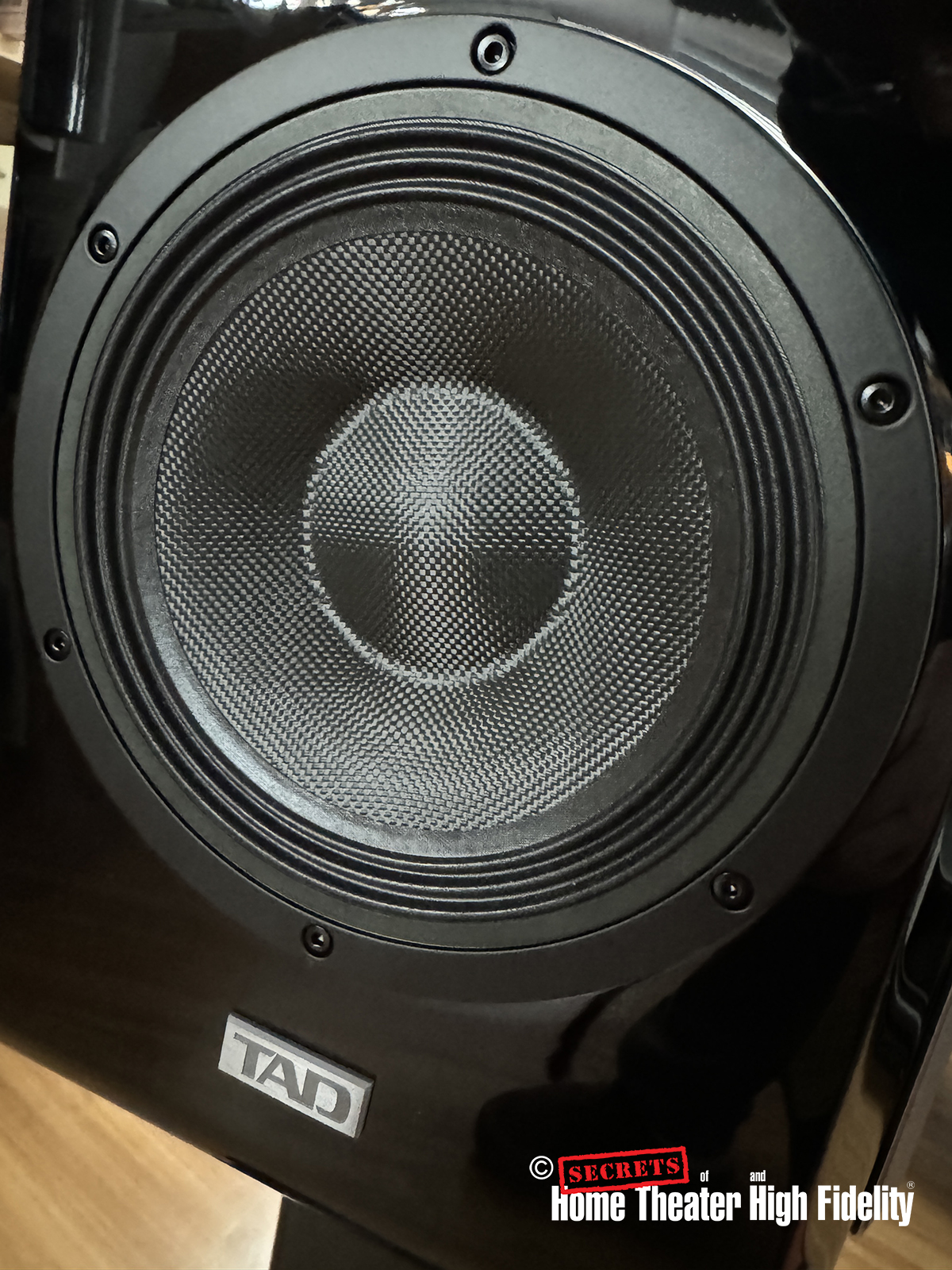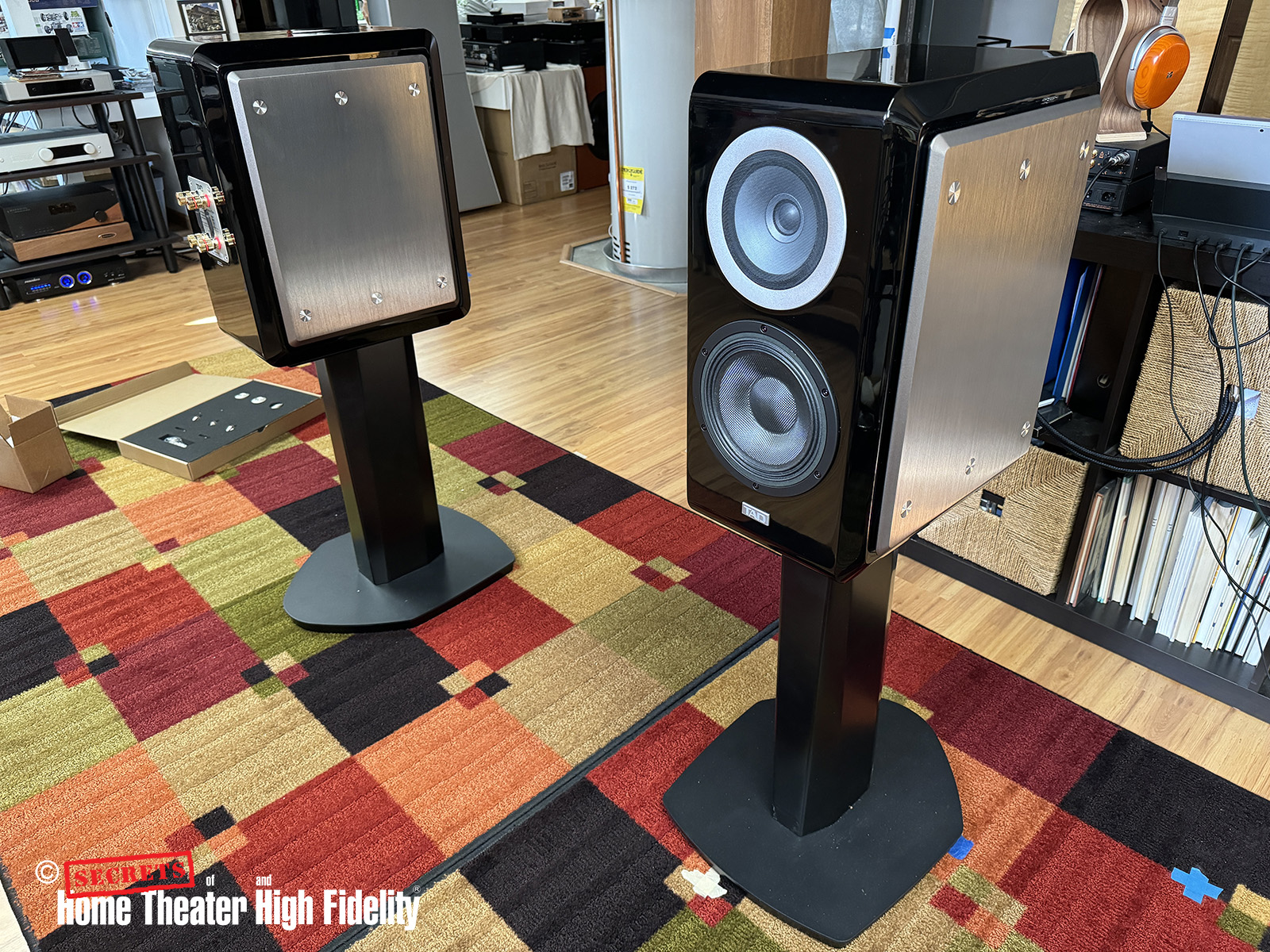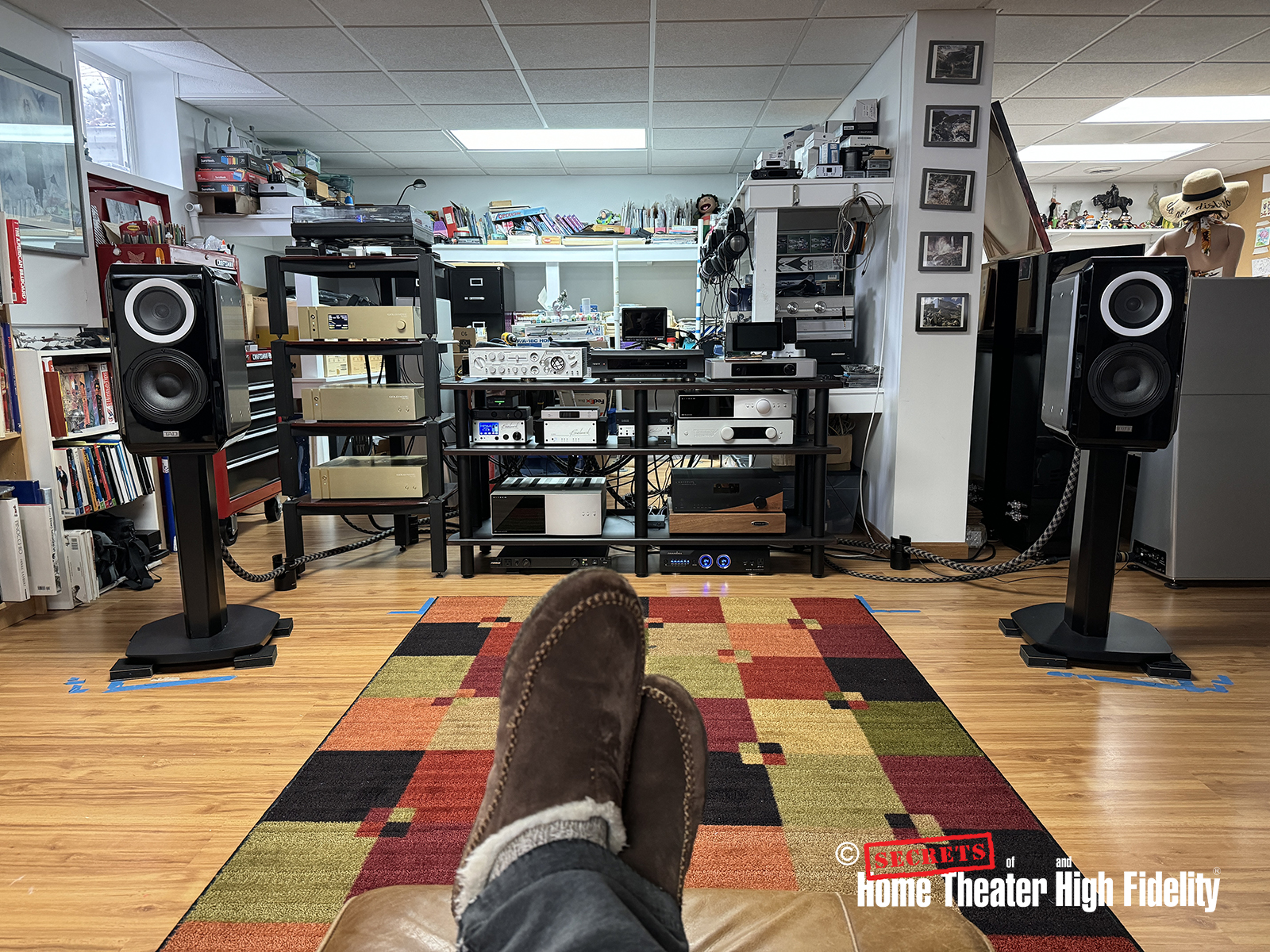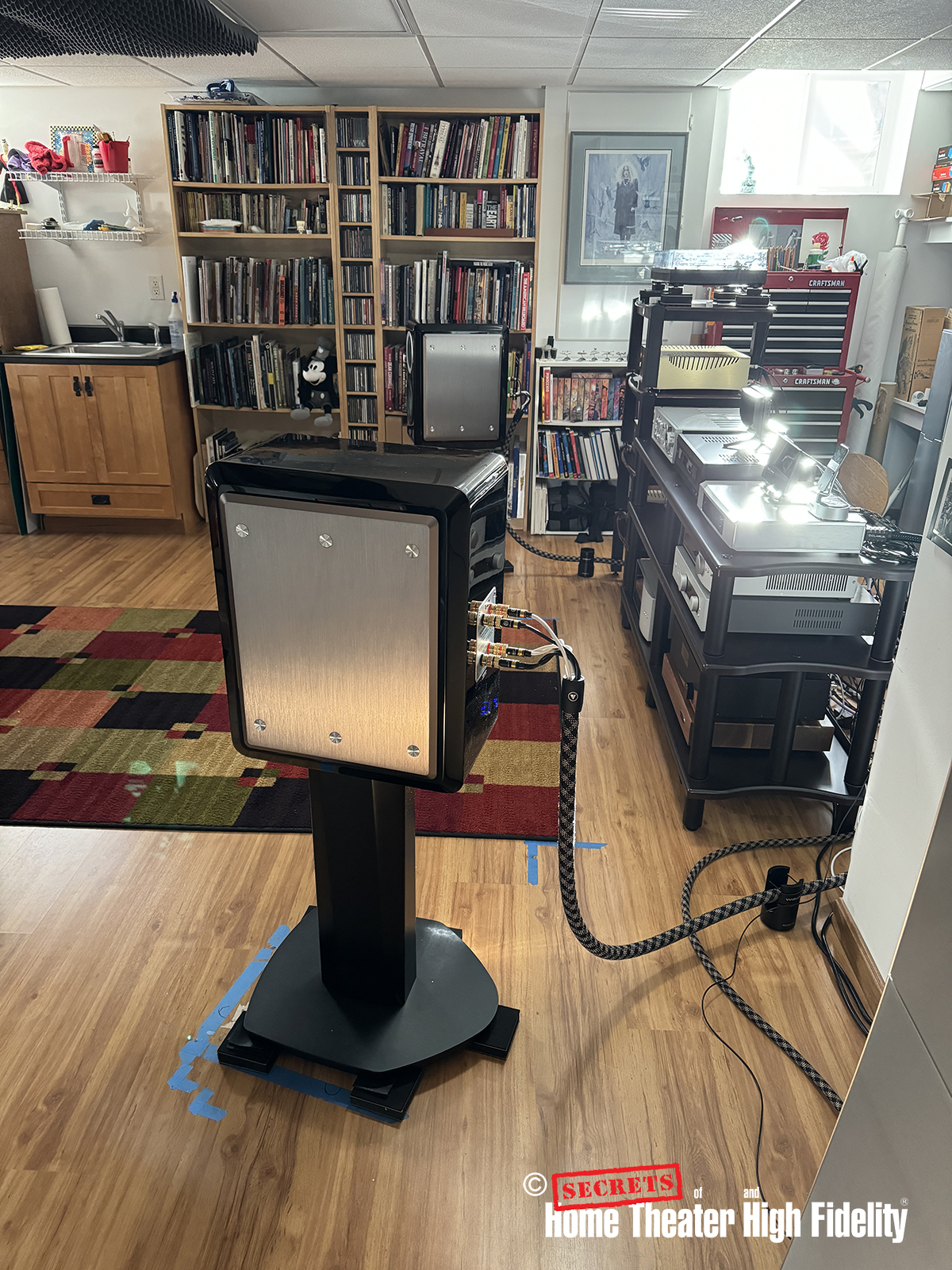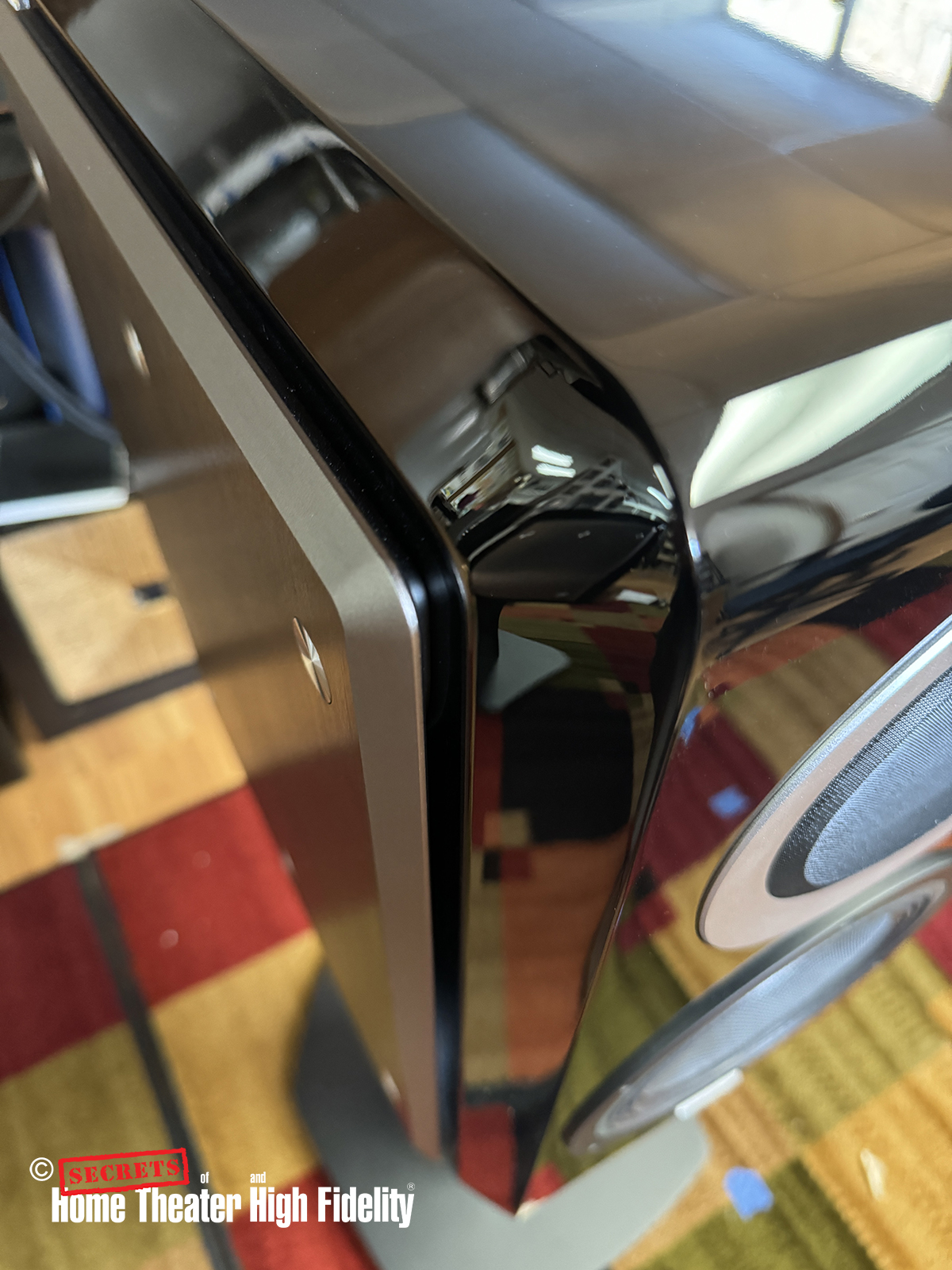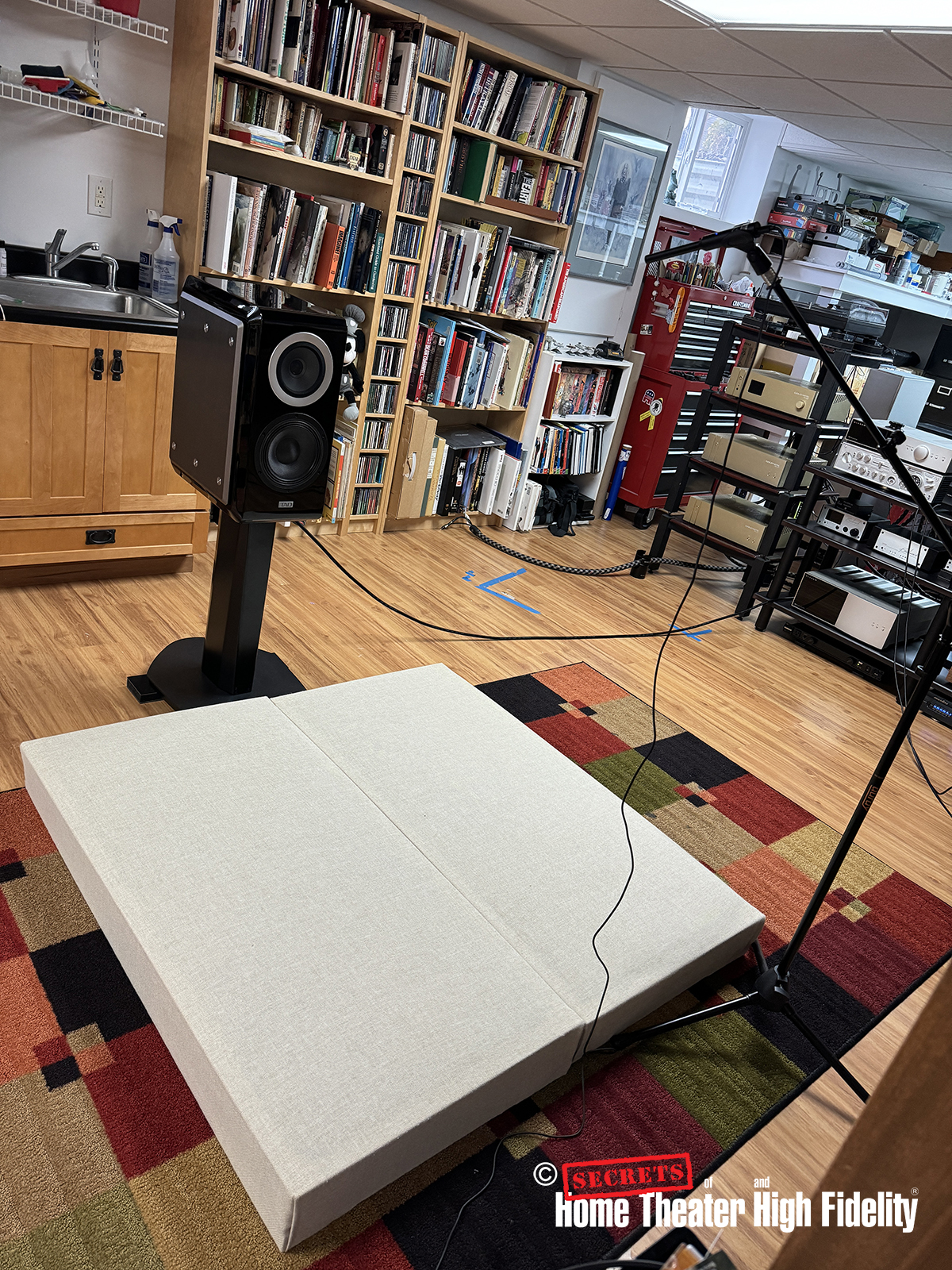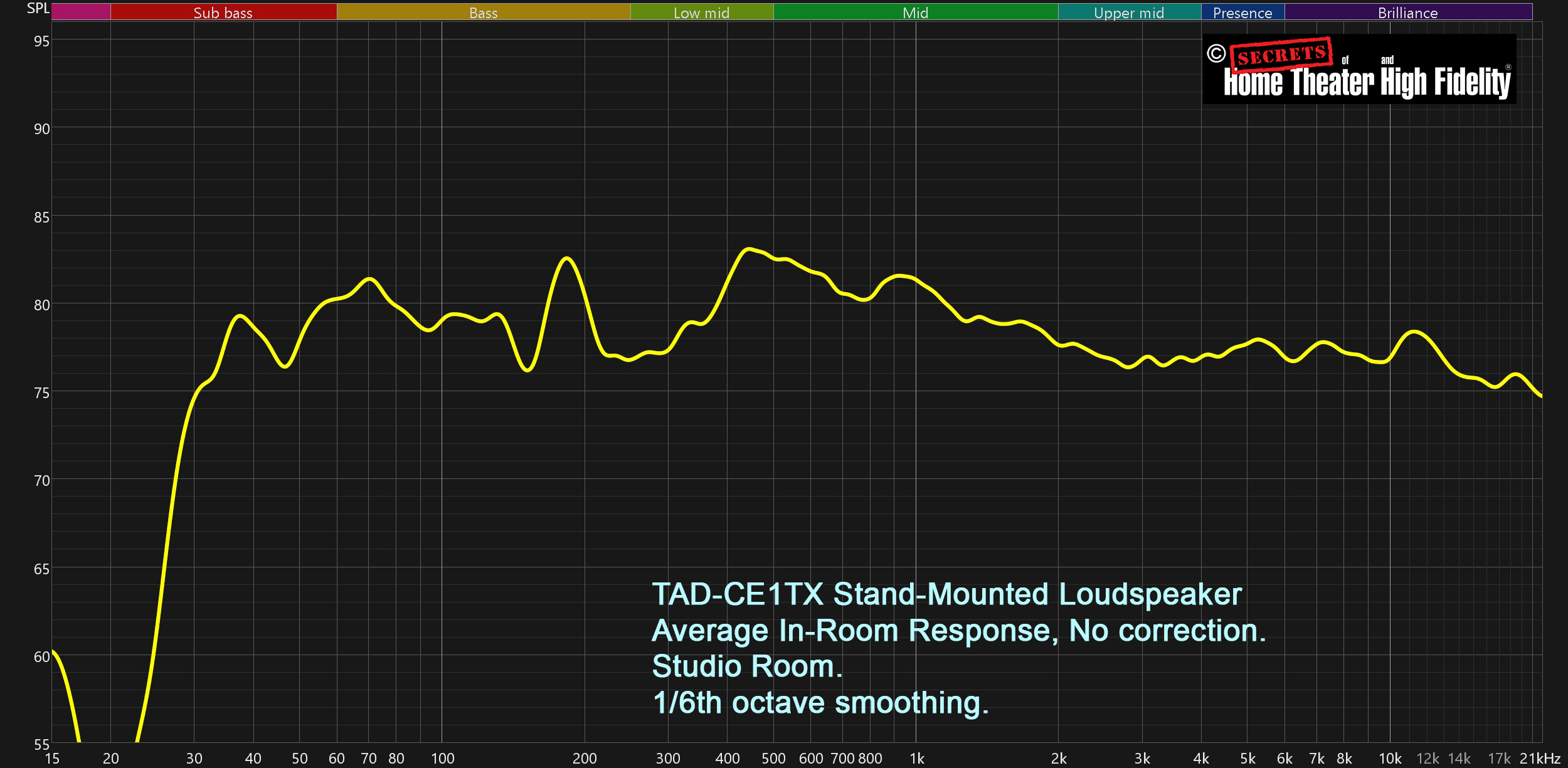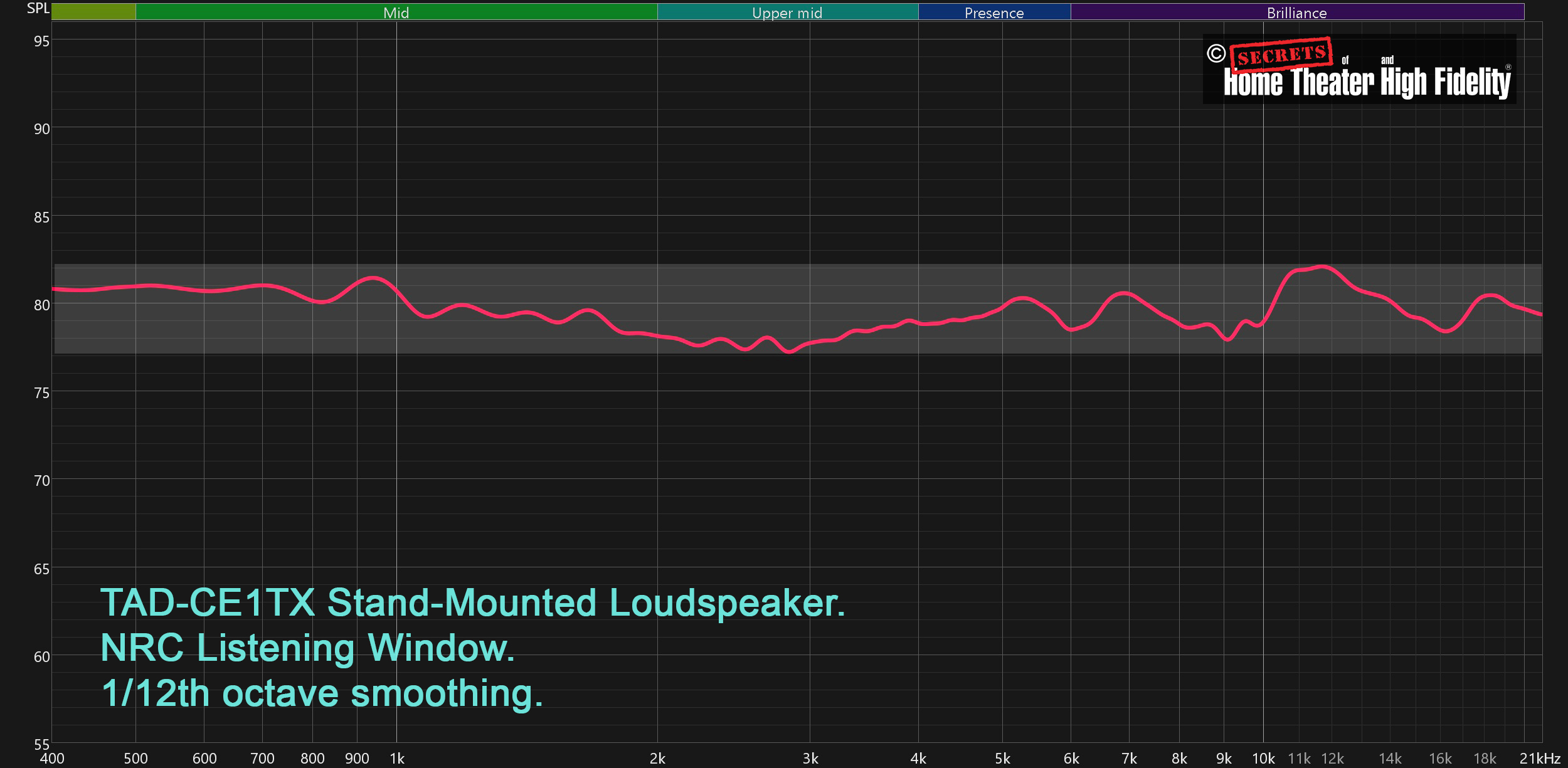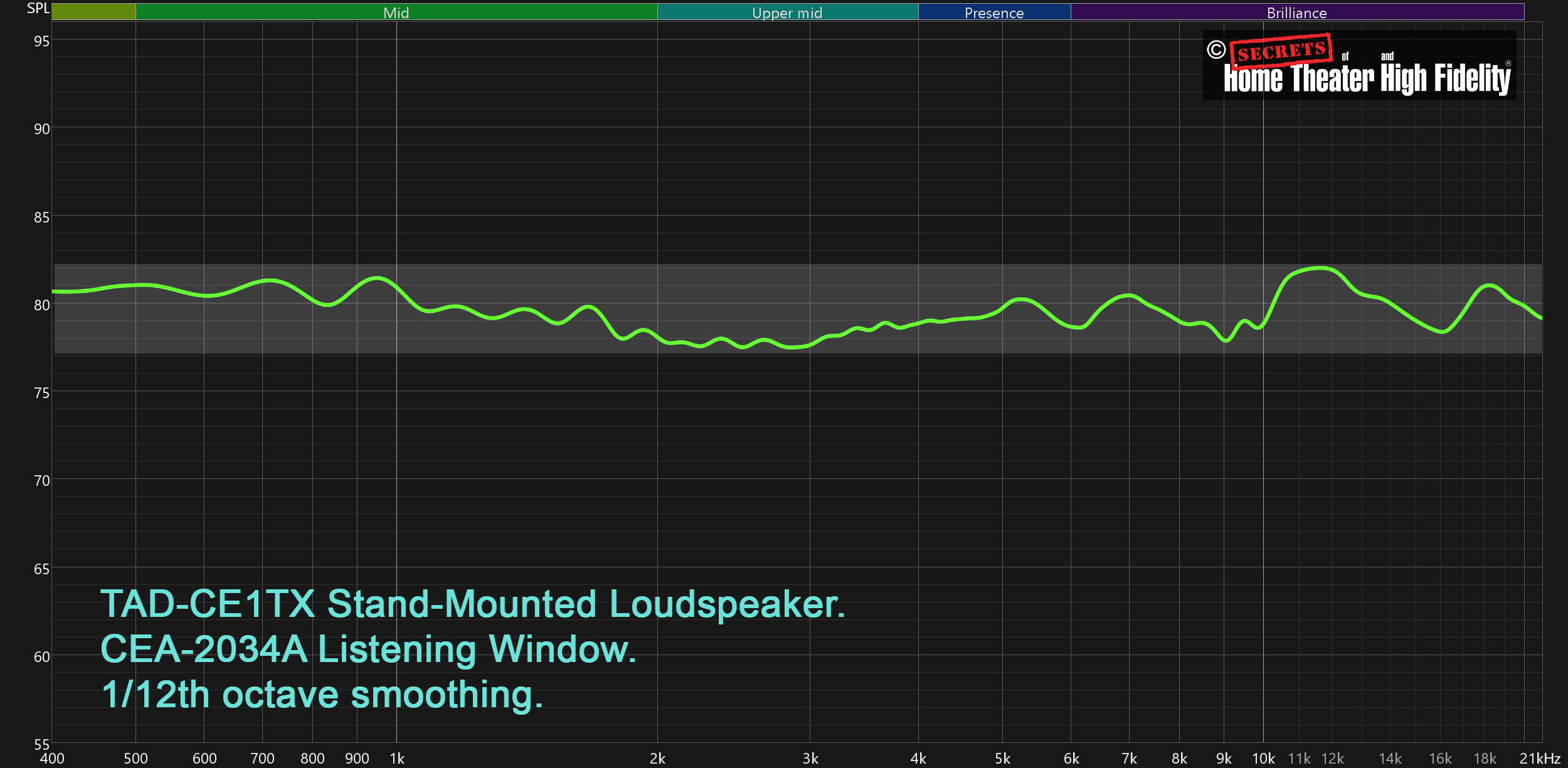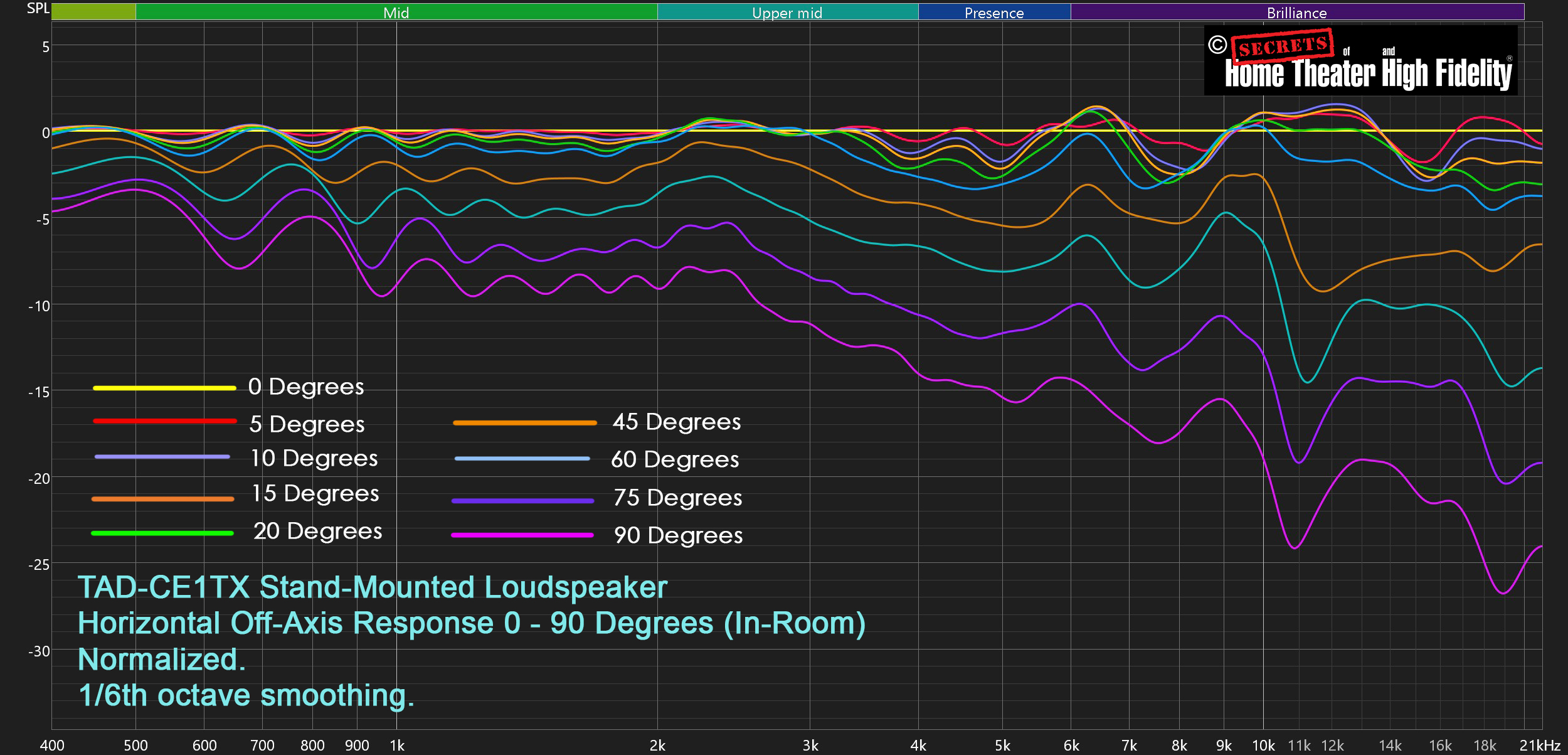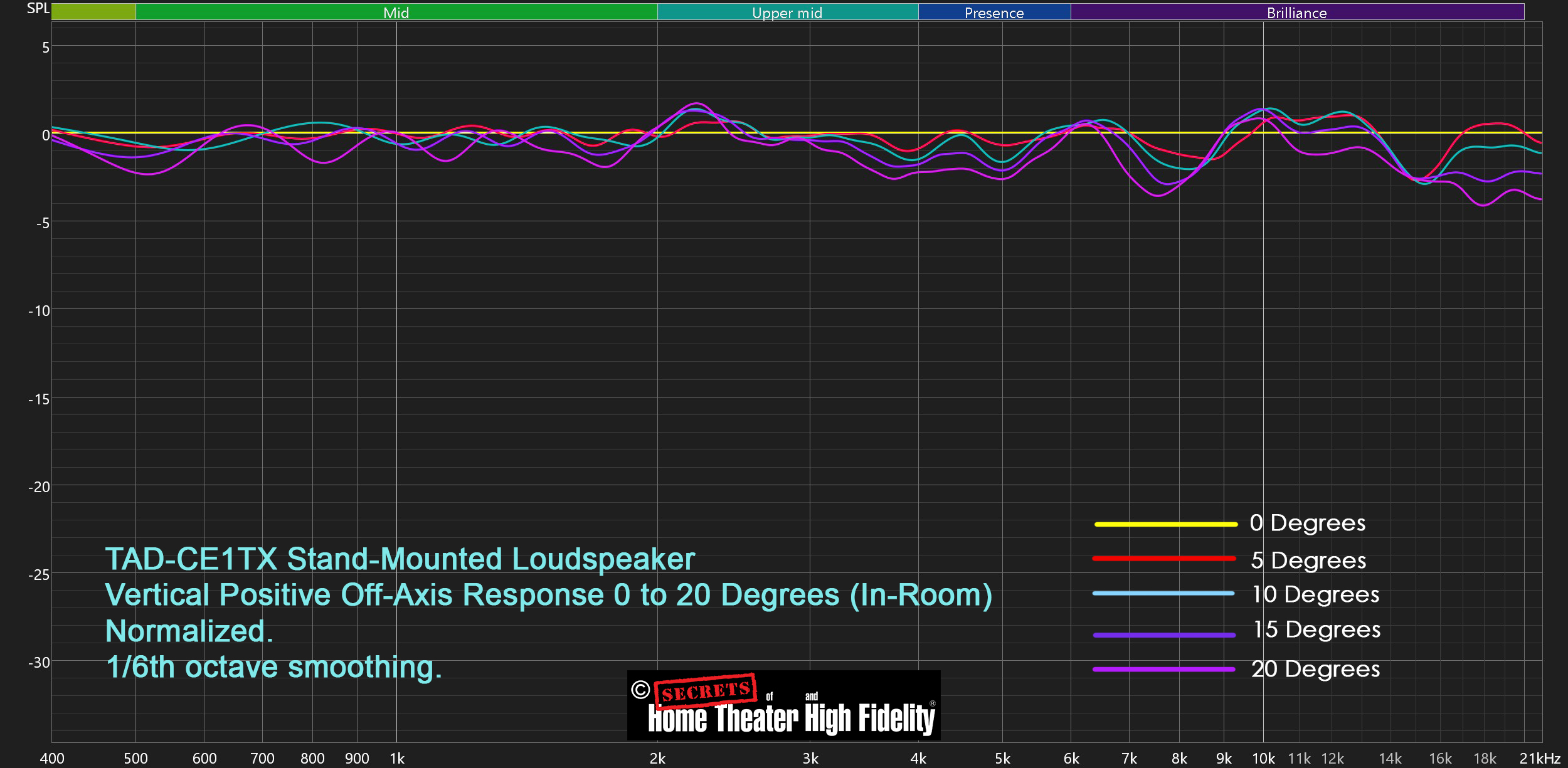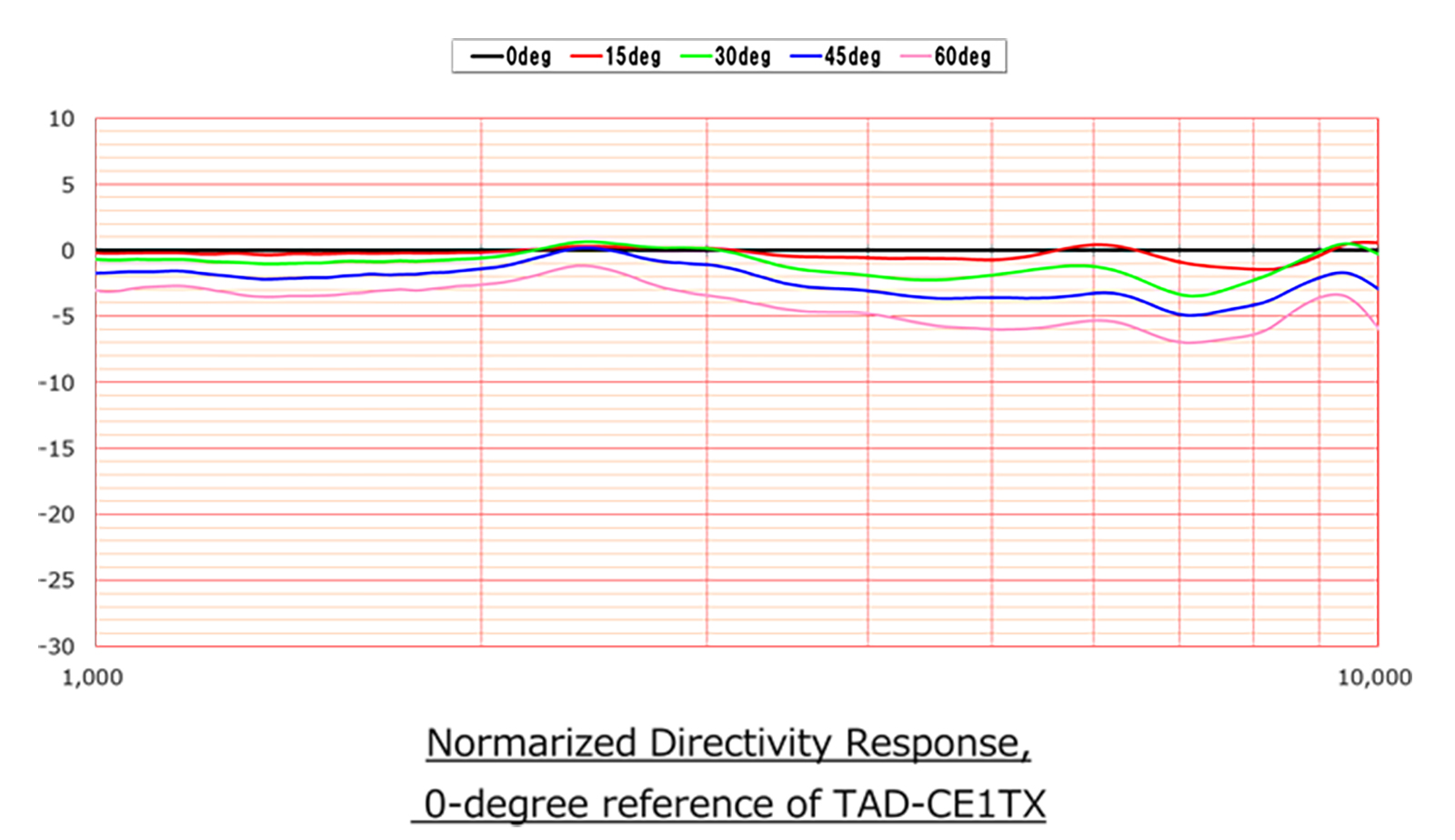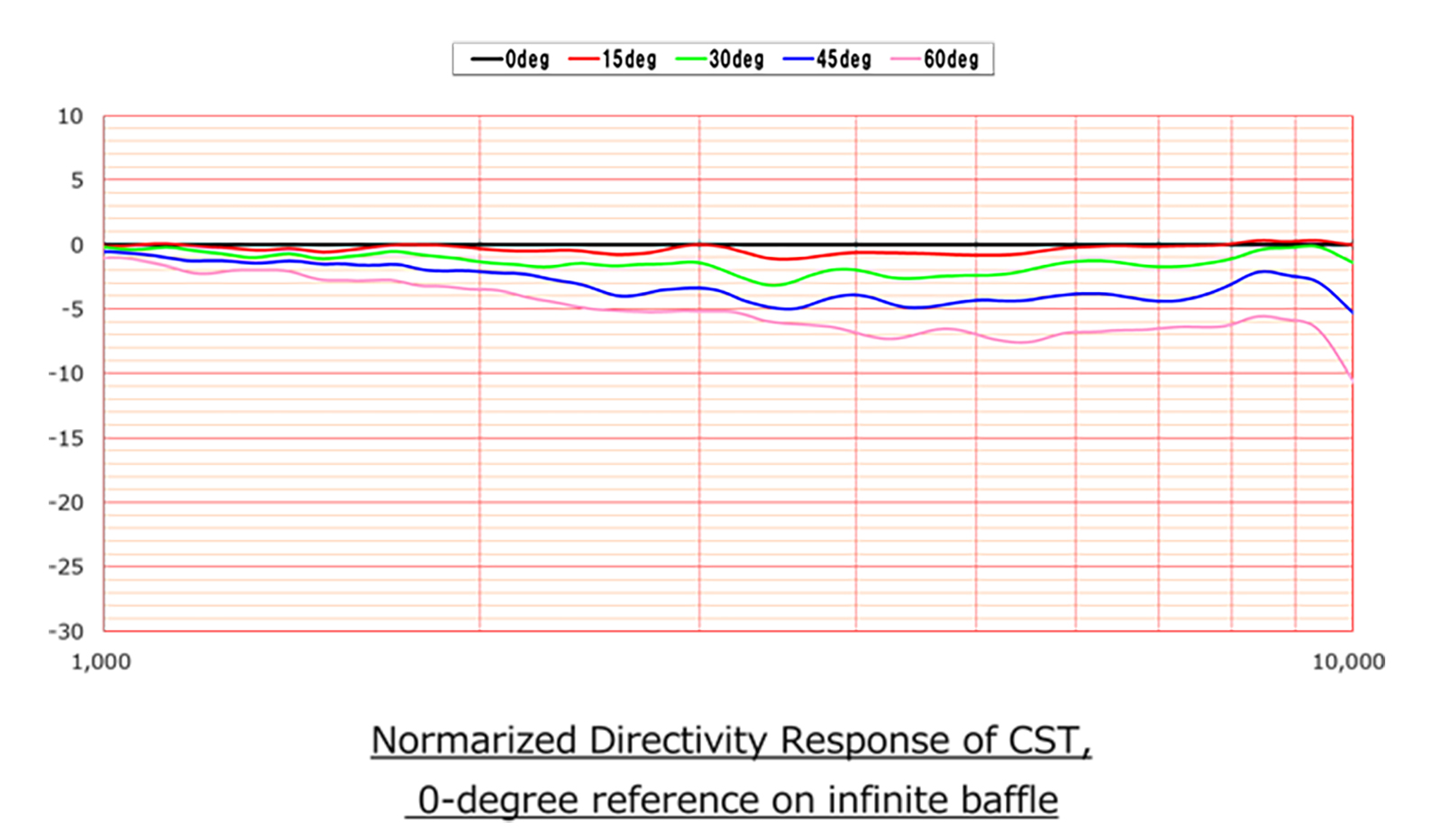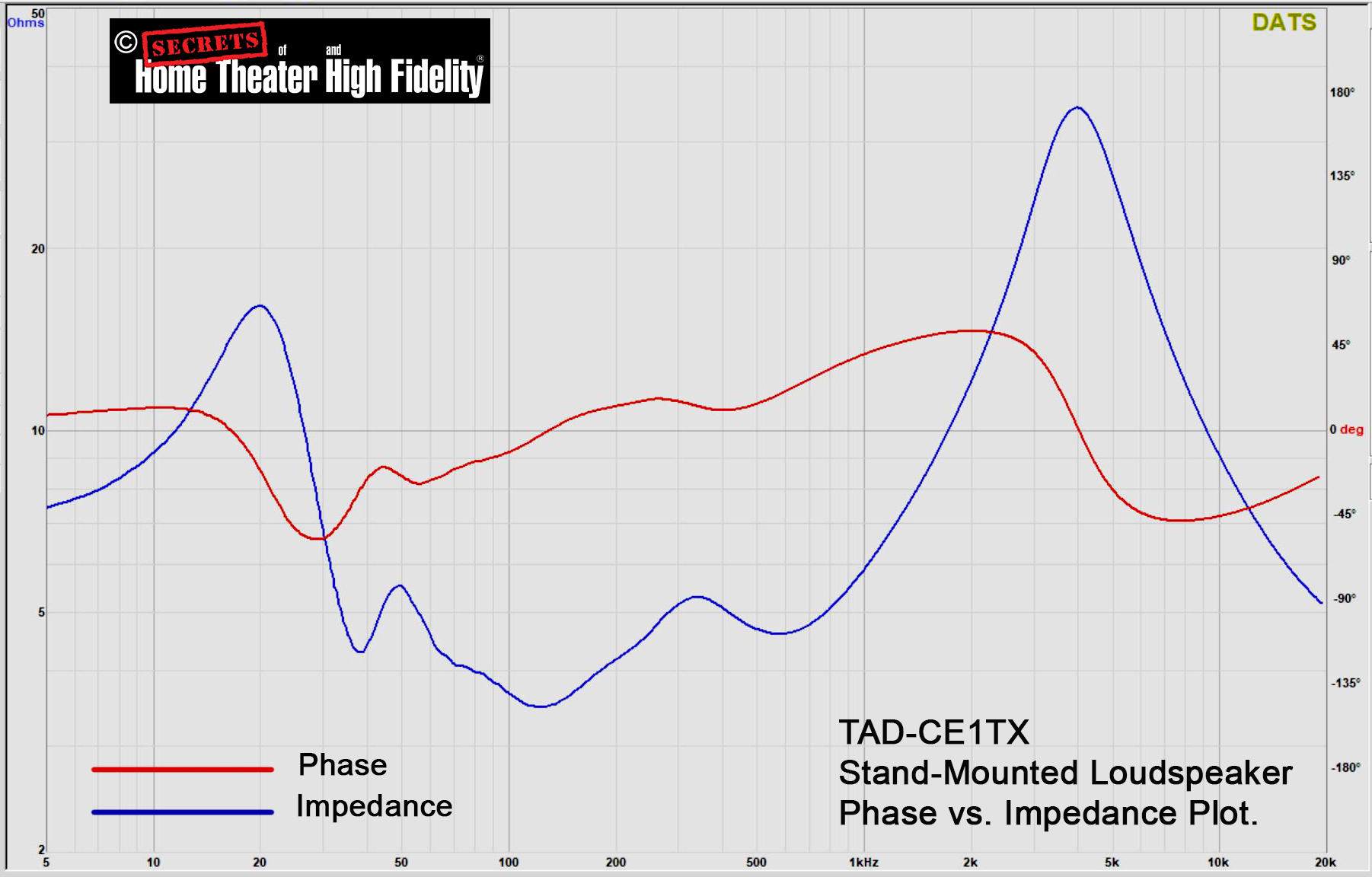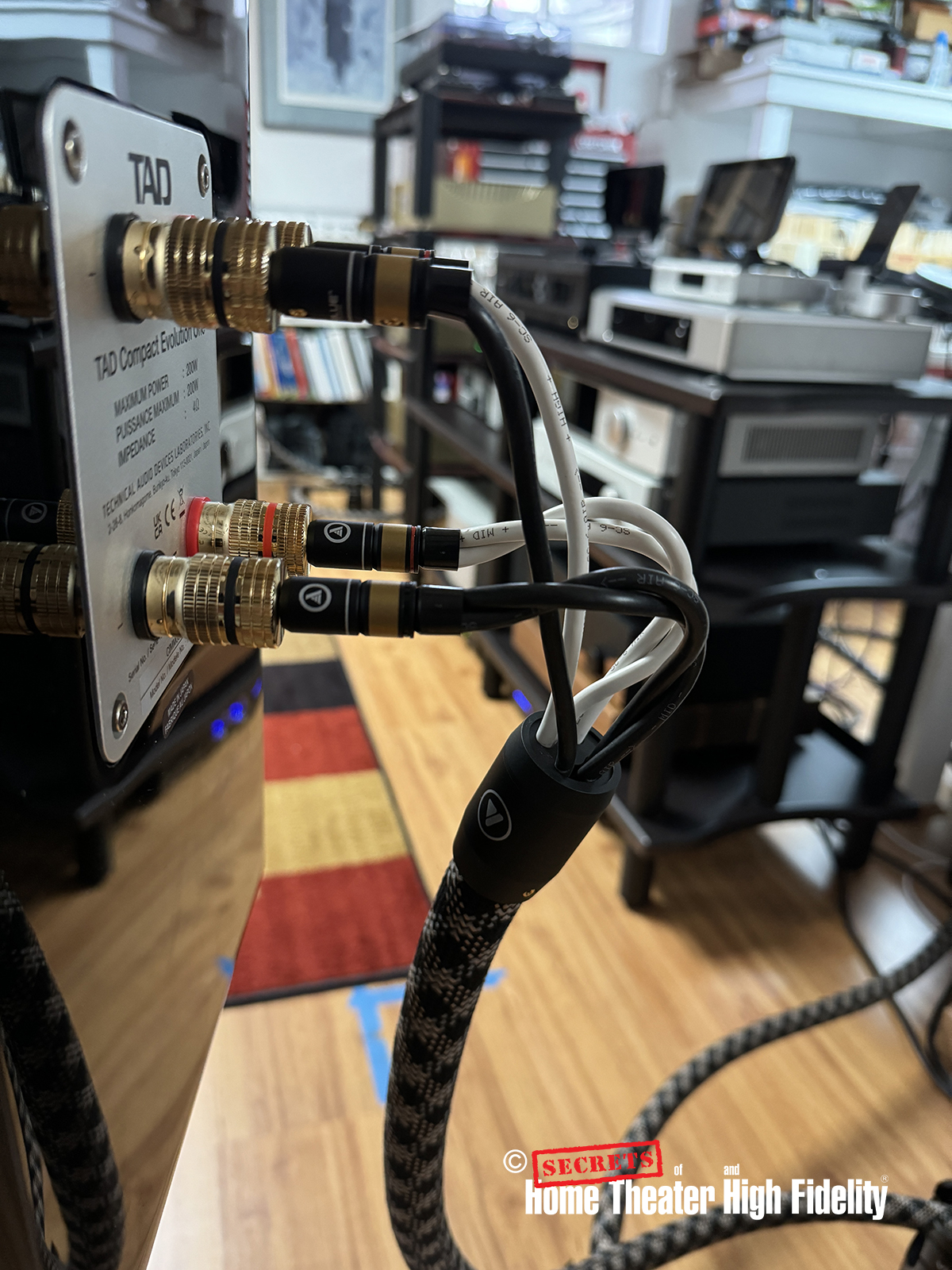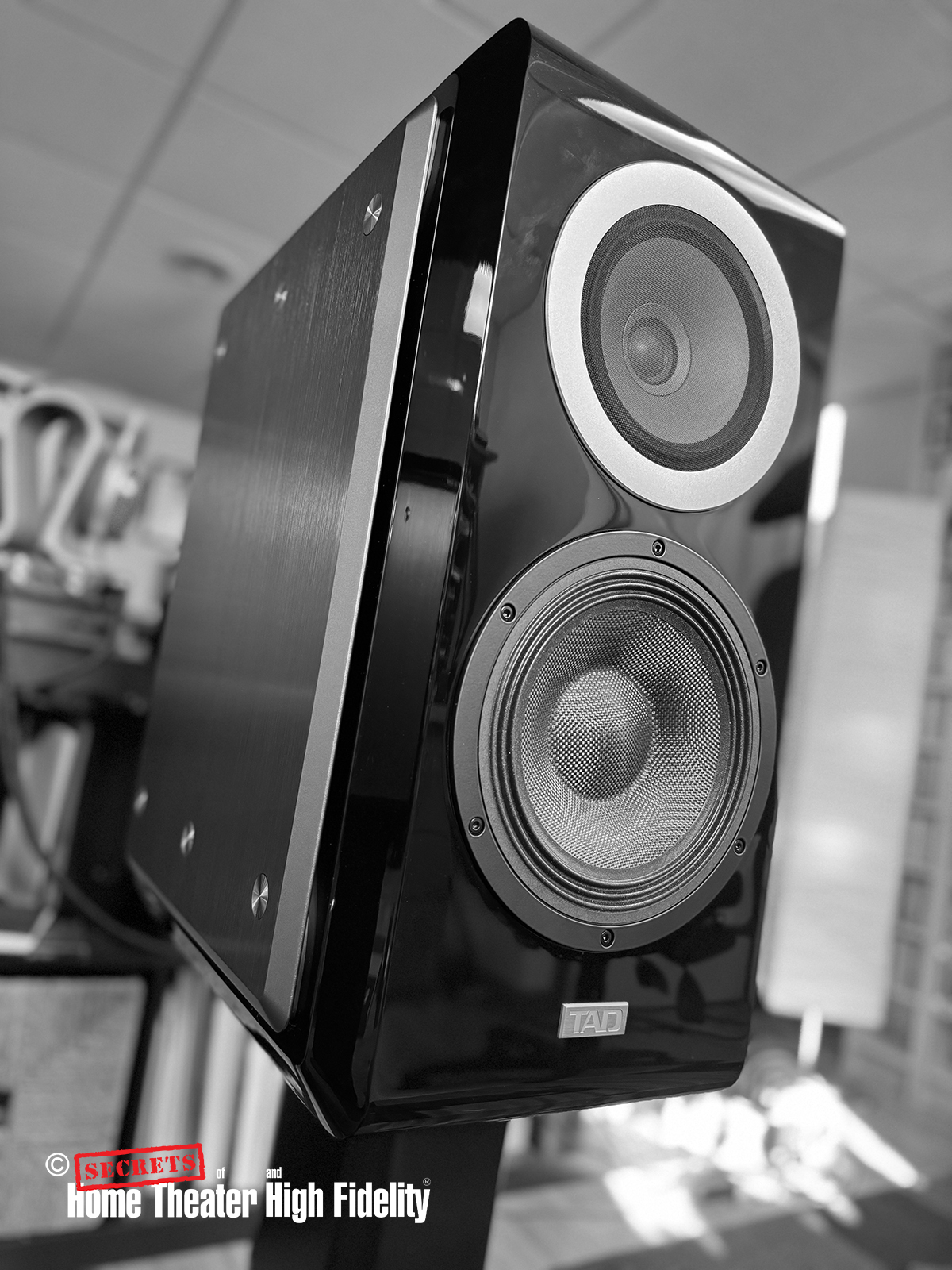The new CE1TX shows every sign of following suit!
In the world of high-end speakers, TAD has a rather revered position in the hearts and minds of audiophiles. Beginning with their origins in professional audio, the combination of handmade Japanese craftsmanship, highly refined technologies, and incredibly appealing sound quality make them a desirable brand for those who know. The Evolution Series sits just below TAD’s Reference Range and the CE1TX is the second of five models, but it is by no means the least capable.
TAD-CE1TX-K Stand-Mount Speaker
- Wonderfully composed and coherent sound, on and off-axis.
- Vocals sound particularly “alive” on these speakers.
- Huge, expansive soundstage.
- Solid, impactful bass.
- Exquisite build quality.
I’ve always had a soft spot in my heart for “the Japanese aesthetic.” It has always appealed to me on multiple levels: the sense of design, the elegant simplicity of form, an appreciation for natural organic shapes, and a quiet almost single-minded focus or sense of purpose. I grew up in an Italian family where everything was louder and more boisterous. The art of everything was bigger and celebrated vividly. It was about wearing your passion on your sleeve, big hugs, kissing on both cheeks, “mangia, mangia” and all that. Through my young adult years as I learned more about Japanese art (and the culture in general), I think it opened my eyes to the idea that the passion and drive to create something special can be expressed in radically different ways, but with equal levels of respect and awe in the final result.
In my mind, TAD Labs (short for Technical Audio Devices Laboratories) straddles that line between high-end and almost “artisanal” audio products. The company has a long history of production, stemming from its beginnings as a specialist offshoot of Pioneer Corp. I won’t go into the whole history of the brand as it has been well covered before but, needless to say, the engineers and designers at TAD cut their teeth in the professional audio world before ever venturing into the high-end enthusiast market. Thus, they have a more complete understanding of the music production chain and the technical know-how to back up their business philosophy “Artistic Intent, Intact.”
It is somewhat apropos then, that within the nine years since I reviewed the previous generation CE1 and TAD vanished from the US market without proper distribution and representation, they have returned in force with the partnership of recent US distributor PAD-HIFI. I say apropos because PAD-HIFI has a professional arm that has been building studio monitor systems using TAD professional drivers for several years. Having spoken with PAD HIFI owner/founder Dave Malekpour on numerous occasions, it’s clear that there is a deep respect and understanding of the brand in all aspects along with a long-term strategy to cultivate deeper and stronger roots for TAD in the US market.
Since TAD’s return to the US, there have been new additions to the Evolution line in the form of loudspeakers and new electronics added to the Reference line. I asked TAD if I could have the new CE1TX in for review because I wanted to see if I still would enjoy it as much as I did the previous generation all those years ago, and because the TAD Grand Evolution One (GE1) hadn’t quite been released yet. On the surface, the changes seem subtle, the deep piano back finish option of the review units being the biggest visual difference. But there have also been a few evolutionary technical refinements, too. Enough that I was curious to experience the new CE1TX in the familiarity of my own listening space for a closer look!
Design:
3-Way Bass Reflex Bookshelf Speaker
Drivers:
One 7 and 1/16th′′ MACS (Multi-layered Aramid Composite Shell 2) Woofer, one 5.5′′ Coaxial Driver with a Magnesium Cone for the Midrange and a 1.4′′ Beryllium Dome Tweeter
Frequency Response:
34 Hz to 100 kHz
Crossover Frequencies:
250 Hz, 1.8 kHz
Maximum Input Power:
200W
Sensitivity:
85dB (2.83V, 1m)
Nominal Impedance:
4Ω
Weight:
63.9 lbs. or 29 kg. (each)
Dimensions:
20′′ H x 11.3 ′′ W × 17.6 ′′ D
MSRP:
$32,500/pair; Optional Stands (TAD-ST2) – $2,500/pair
Accessories:
Woofer grille, short cables x 2, non-slip pads x 4, cleaning cloth, owner’s manual.
Company:
SECRETS Tags:
TAD, Coaxial, Beryllium, Concept Evolution, Bookshelf Speakers
Secrets Sponsor
If you were looking at the first-generation CE1 and the latest CE1TX side-by-side, you’d be hard-pressed to notice any obvious physical differences. They are there, but they are certainly more on the subtle level. The basic driver dimensions, layout, and construction remain the same with a 1.4” Beryllium dome tweeter set inside a 5.5” magnesium coned midrange. This is paired with a shade over 7” aramid fiber woofer. Sounds familiar. But look closer and you’ll see that details like the front baffle area being reduced by 10mm in height and 3mm in width (without a reduction in interior volume) along with modestly altered aluminum side panels are the order of “subtle” we are talking about here. I liken it to a sculptor revisiting their work with a set of finishing tools, shaving bits of clay off here and there to get to that perfect final work.
Additional changes include a differently shaped trim ring around the concentric (CST) driver which allows for better dispersion from the tweeter. Extra internal bracing has been added to the top and bottom of the speaker. The crossover design has been refined along with the three crossover boards being spaced farther apart and inverted to reduce any component interaction. The physical weight of the midrange cone has been reduced due to the use of lighter dampening coatings on the front and back surfaces along with additional tweaks to the midrange driver’s voice coil.
The aramid fiber material (like Kevlar) used in the bass driver cone has been upgraded to the same type used in the higher-end TAD-R1TX’s woofer. The CE1TX’s woofer suspension has been upgraded to a corrugated type with special damping like TAD uses in their pro drivers along with a strengthened spider assembly. These changes are said to help improve the woofer’s overall linearity and reduce distortion.
Slightly slimmer stands and plinths combined with a finer and more mirrored finish on the still beautiful wood surfaces round out the differences between the two generations. For what it’s worth, I find the new CE1TX equally as attractive as the original.
The TAD-CE1TX were arranged approximately 9 feet apart in my studio listening area with the main seating position being 10 feet away from the center position between the two speakers. After some experimentation, I settled on toeing in the speakers by almost 5 degrees. Some of the equipment used in the review consisted of the following:
– HiFiRose RA 180 Integrated Amplifier.
– Benchmark AHB2 Power Amplifier.
– Benchmark DAC3 B Digital to Analog Converter.
– Benchmark HPA4 Preamplifier.
– Anthem STR Power Amplifier.
– OPPO BDP-105D Universal Disc Player.
– GeerFab D.BOB Digital Breakout Box.
– DIY Raspberry Pi-based Endpoint.
– Technics SL1200 Mk6 Turntable modified by KAB Electroacoustics. – Audio-Technica ART20 MC Phono Cartridge.
– Gold Note PH-1000 Phono Preamp.
– Viablue Interconnect and Speaker Cable.
– EVP Absorbers from AV Roomservice.
In my studio space, I had the TAD-CE1 positioned essentially the same way as when I had the original CE1 here. This meant that the speakers were well out from the front wall so they would be getting minimal, if any bass reinforcement. This was just fine for most of my listening, I have a pair of subwoofers set up and dialed in for the room as well so when I want additional bass, I can easily blend those in if I choose. However, when I moved the CE1TX to try them out in my smaller home theater room, they were just shy of 3 feet away from the front wall and the additional room gain they picked up in the bass was very beneficial, mitigating the need or desire for adding a subwoofer. So, if you are planning to use these speakers alone keep this in mind.
I first heard the original TAD-CE1 back in 2019 at CES in Las Vegas. At that time, Andrew Jones was conducting one of his, by now, highly anticipated demos for his then-employer. There is just something in the way that a well-done concentric or coaxial speaker presents the sound to my ears that I find very pleasing. And in that particular demo of the original CE1, I wasn’t the only one who was so taken. It’s that impression that the music that you’re hearing comes across as being almost alive in the listening room in front of you. It’s an experience that I can trace back to the first pair of active Tannoy studio monitors that I got to hear in a recording studio years earlier.
After that, aforementioned Andrew Jones demo, I was able to secure a pair of TAD-CE1 to review and I was thrilled that I was able to re-create that same “alive” experience, within reason, in my studio listening room. Now, years later, the question is, does the new TAD-CE1TX have the same performance and sonic appeal that the originals did?
I’m happy to report that indeed they do. It was a bit like having an old friend over for an extended visit. However, this time my friend was wearing a suit of the deepest and most lustrous piano black that looked as though it took the “tailors” many man-hours to finish.
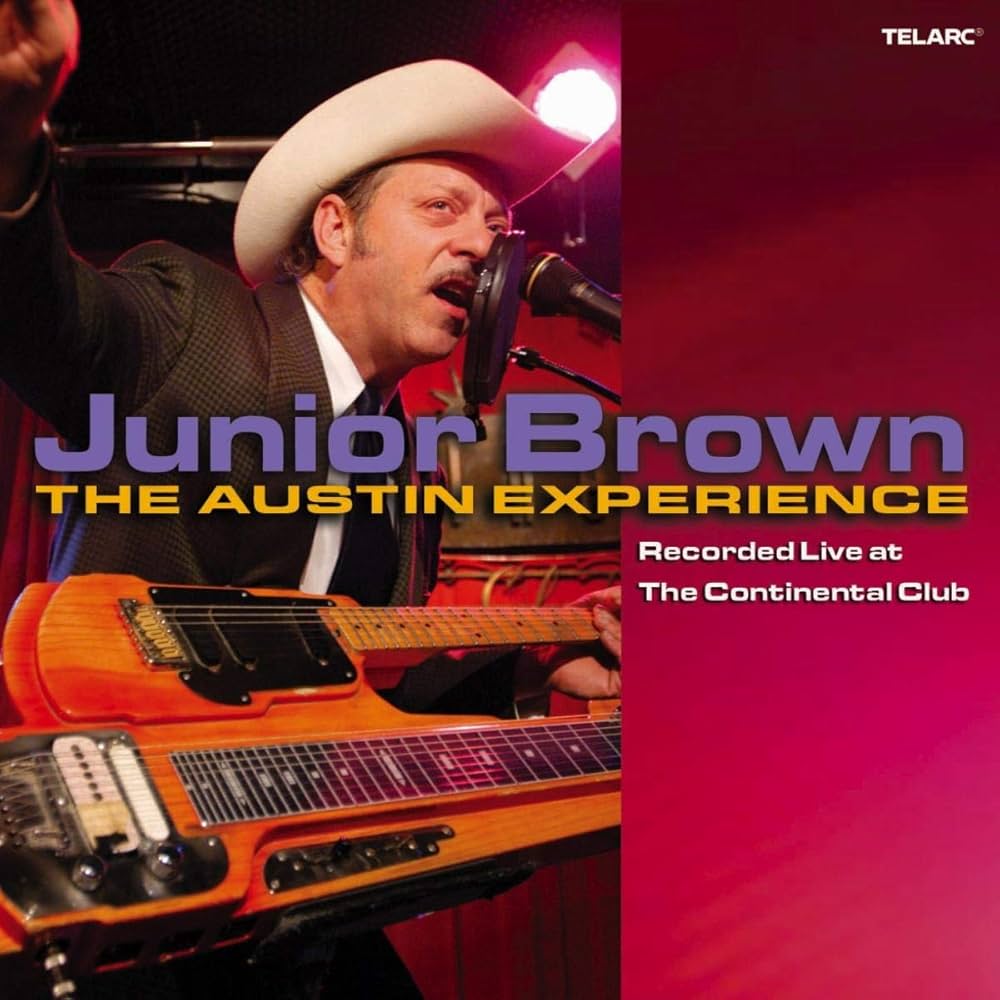
Junior Brown, “Live At The Continental Club, The Austin Experience”
A well-recorded live concert was a treat to experience on the CE1TX and so what better music to play on these refined Japanese gems than some hillbilly, guitar-drenched country “twang” music! Yup, out came my Telarc CD of Junior Brown, Live at the Continental Club (The Austin Experience) and I cued up “My Wife Thinks You’re Dead.” The CE1TX instantly pulled off their little magic trick of sufficiently recreating that Austin Texas nightclub with all the ambient cues, crowd, clinking glasses, and general atmosphere that was captured so well in the recording. Junior Brown’s rich baritone drawl came through the speakers front and center with plenty of dimension, clarity, and weight. The transition from mid-range to woofer sounded pretty seamless in this regard. I could also say the same about how the concentric driver handled all the piercing guitar pyrotechnics, extreme bends, and ringing harmonics that Brown is known for. TAD’s unique side-vented enclosure helped complete the picture by providing a nice degree of bass extension for the song’s acoustic bass and drum kit. Having been to a few live Junior Brown concerts myself, short of the beer, and standing-room-only crowd, it sounded very much like being there.
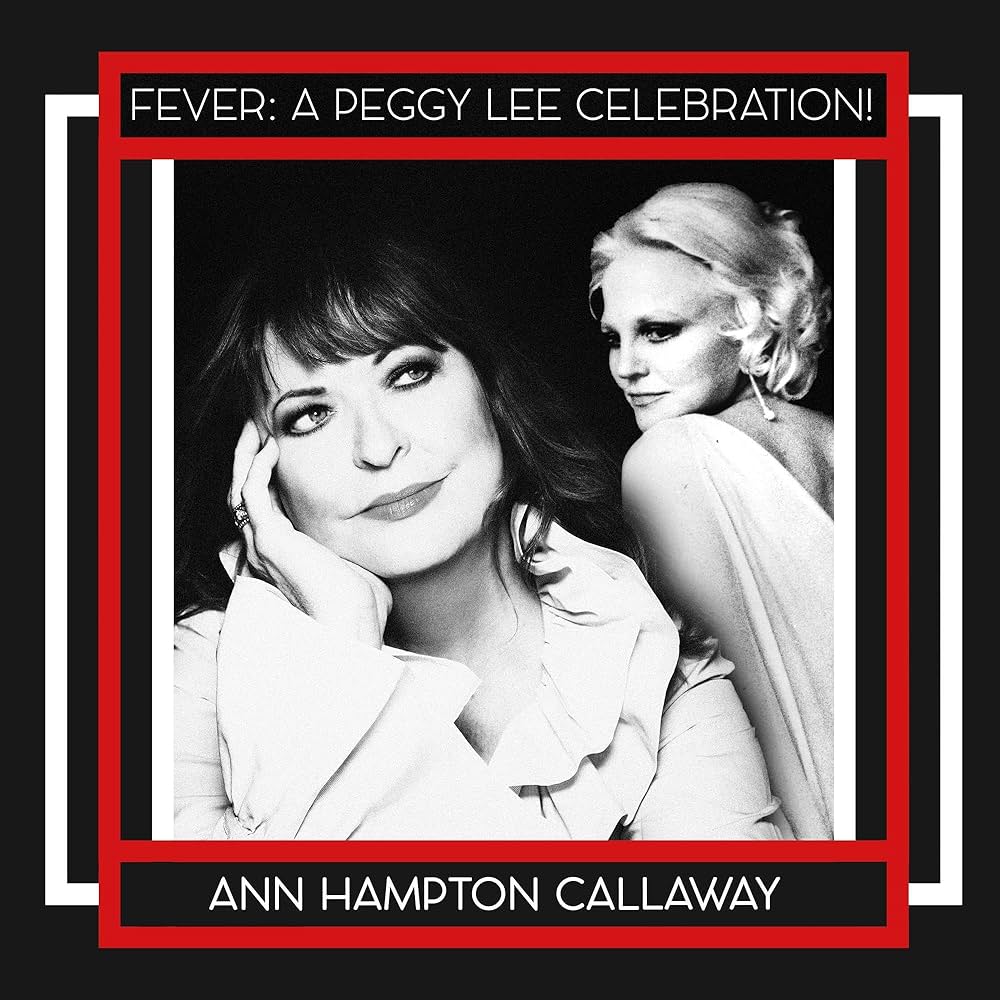
Ann Hampton Callaway, “Fever: A Peggy Lee Celebration!”
“I Love Being Here With You” sung by Anne Hampton Callaway from her album Fever, A Peggy Lee Celebration was another standout track with these speakers. Callaway’s voice is full and deep for a female singer, and silky smooth on this track. The CE1TX threw a huge, deep soundstage with the piano anchoring the double bass, guitar, and drums. The bass was satisfyingly deep and detailed, and the piano notes had an appealing ring and decay to their sound. The ever-present ride cymbal had that crisp brassy sheen that is unmistakable. Callaway’s voice was a little more forward than I’m used to hearing with my reference speakers (Revel F228Be) but it wasn’t objectionable in any way. It simply cemented her as the center of attention but not enough to detract from the rest of the band. Much of the same observations applied to the track “Johnny Guitar.” The Spanish guitar opening to the track was wonderfully warm and transparent with plenty of details coming off the strings and the guitar body. Callaway’s deep, breathy vocals here had every inflection revealed by the TAD-CE1TX.

Steely Dan, “Two Against Nature”
Steely Dan’s “Cousin Dupree” from Two Against Nature is one of my staple test tracks for speakers and the CE1TX made it sound excellent in many respects. As I’ve mentioned, the big expansive soundstage combined with its stellar imaging are this speaker’s calling cards, and this track milks that for all it’s worth. Donald Fagan’s singing is again a touch on the forward side but not overly so. The bass on this track sounded detailed and extended but I didn’t get the full impact from the song’s bassline and synthesized bass until I moved the speakers into our smaller home theater room and closer to the walls. Beyond that, the balance of the rest song sounded very appealing. The drum hits on the song can sound thin and one-dimensional with some speakers, but not so here. The drums actually sounded like sticks hitting skins. Walter Becker’s tasteful guitar solo can exhibit the same thin-sounding issues, again, not so with the TAD-CE1TX.

Mario Rossi Conducting The Orchestra Of The Vienna State Opera, Rimsky-Korsakov, “Scheherazade”
“The Sea and Sinbad’s Ship” from Rimsky-Korsakov’s Scheherazade from my classic Vanguard Everyman LP is not the most “audiophile” version of this classic piece that I own, but it is “good enough.” It is however my favorite rendition of this classic and the TAD-CE1TX makes the most of it. My almost 60-year-old copy of this LP is surprisingly clean sounding, and these speakers just created a warm and expectedly expansive recreation of this full orchestra. As I’d hoped, this old piece of vinyl was giving the TADs enough information for them to do their thing. The track has multiple counterpoints of a very sweet-sounding solo violin, harp, or cello where you can hear the ambiance of the recording space that then opens up into the swell of the full-intensity orchestra. That back-and-forth interplay of intensity and detail is something that the TAD-CE1TX does very well, even when pulling from the grooves of an old slab of vinyl. These stand-mounted speakers can sound quite massive when they want to and at the same time resolve all the wonderful little details found in the string instruments, tambourine cymbals, and flute. The TAD-CE1TX speakers made listening to the full album a complete delight.
Is there anything I didn’t like about the TAD-CE1TX? Well sonic memory being as unreliable as it is (particularly after nine years) I wanted to say that I thought the first-generation CE1 had a little more bass impact when I had it in for review, in the same room, back in 2015. Not that the current model’s bass was overly lacking but I couldn’t shake the impression I had that the original CE1 went just a little bit louder and deeper. Again, moving the newer speakers to a smaller room and/or closer to a wall makes the slightly less bass extension issue a moot point but I found it an interesting difference, nonetheless.
Secrets Sponsor
Bench tests were performed with a Cross Spectrum Labs calibrated UMIK-2 microphone connected to my computer workstation using Room EQ Wizard acoustic measurement software. Unlike measurements taken outdoors or in an anechoic chamber that measures a speaker in isolation, in-room measurements give a sense of how a speaker behaves in the actual environment in which it’s used. Both types of measurements are valuable (make no mistake, a properly designed speaker in an anechoic environment will hold up much better in an average listening space), I just find in-room measurements interesting as they help shed light on what I am hearing and why.
David Rich notes:
The figure above is an example of quasi-anechoic measurements being made in Carlo’s room. This attempts to produce a response similar to an anechoic chamber by allowing the windowing out of early reflections in software, in our case, REW.
To get good quasi-anechoic measurements, the setup should attempt to minimize room reflections. Moving outside helps significantly, provided one has cooperative neighbors and space to do it outside. The speaker must be lifted well above the ground to take advantage of an outdoor space, or the floor bounce will dominate. It is just not workable for Carlo, so the photo shows how he does it indoors. The foam pad on the floor is used to reduce floor bounce. Measurement with this setup results in reflections returning quickly, requiring a short window to remove them. This reduces resolution below 1kHz and places an absolute limit above 300Hz. Floor-standing speakers present problems since they cannot be lifted at all. Depending on the speaker, reflections may come in more quickly, further reducing the resolution, often limiting the measurements to 1 kHz.
The listening windows (shown later) are averages of 5 – 9 individual measurements. Since the individual measurements do not have the same reflections, the average tends to be more accurate than the individual curves.
We also normalize the radiation patterns, removing some correlated reflections across all measurements.
We correlate our quasi-anechoic measurements with measurements published for the same speaker by others in an outdoor environment or with an actual anechoic environment (chamber or Klippel). This makes it clear that measurements are less accurate but still helpful in showing the speaker’s performance.
In-room spatial averages occur in the room; below 300Hz, they primarily reflect room modes. These are done with a spatial average of multiple microphone placements near the listening seat which are then averaged. An 18-point spatial average in-room measurement will be shown in the figure below.
The bass response limit can, to some extent, show up in an in-room spatial average measurement, but room modes are still present, so it is best to compare to other speakers’ in-room measurements made in the same room.
Above 300Hz, the in-room measurement should match the anechoic Predicted Impulse Response (PIR), but we cannot measure the early reflection and power response required for the PIR. These require off-axis measurements exceeding 90 degrees. For us, an in-room measurement above 300Hz is the best way to show what the PIR may look like. A non-monotonic in-room response above 300Hz strongly points to a bad PIR if the room has been set up so that no early reflection set (front wall, rear wall, left side wall, right side wall, floor, and ceiling) dominates over the others.
This in-room measurement is an 18-point spatial average. A 9-point measurement was made for the right speaker and then repeated for the left speaker. Averaging both speakers is an approach others have been using and publishing. Using data from both speakers reduces the modal response of the room by averaging the differences in the response of the two speakers from room asymmetries. The technique cannot eliminate them however and so the response below 300Hz remains room-dominated.
David Rich notes:
A prominent peak between 300Hz and 1kHz dominates this. It is not clear what is causing this. The energy loss between 1.5kHz and 4kHz, as well as the peak at 12kHz, correlates with our listening window response, which will be discussed next.
This is a plot of the NRC listening window for the TAD-CE1TX scaled from 400 Hz on up which is averaged from the following measurements: 0-degree on-axis, +-15-degrees vertical, and +-15-degrees horizontal.
David Rich notes:
This curve, like all the quasi-anechoic curves to follow, is windowed to 6 msec to reject room reflections. As a result, resolution drops significantly below 1kHz. The curve is flat to 400Hz. While no peak is seen, it is possible that the peak is lost as a result of the window.
As mentioned above, this curve shows an energy loss between 1.5kHz and 4kHz and a peak at 12kHz, so we can say that the speaker was not affected by room issues above 1kHz.
This is a plot of the CEA-2034A listening window for the TAD-CE1TX scaled from 400 Hz on up which is averaged from the following measurements: 0-degree on-axis, +-10-degrees vertical, +-10-degrees, and +-20-degrees horizontal. This is the portion of the frequency range that is dominated by the speaker (response below 300 Hz tends to be dominated by the room and can vary greatly).
David Rich notes:
The curve is very similar to the NRC window.
Above are the horizontal radiation curves of the TAD-CE1TX from 0 to 90 degrees, scaled from 400 Hz on up, measured in-room.
David Rich notes:
This curve set is normalized, so 0 degrees is a straight line. All the other curves are relative to the flat 0-degree response.
Moving to the vertical radiation pattern for positive angles, we see the plots for 0 to +20 degrees, scaled from 400 Hz on up, measured in-room.
David Rich notes:
While a coax design presents significant design challenges with diffraction effects in the tweeter response interacting with the midrange cone, it is made up for in the trade that there is no response dip at the midrange tweeter crossover, since the midrange and tweeter are not offset.
I note that the diffraction effects are small in the TAD in all the normalized vertical and horizontal responses. Given the price of the speaker, we expect diffraction issues to be less present. As a result, a larger budget for the drivers allows for more advanced techniques to be applied.
The woofer is offset from the midrange at 250Hz. Room effects will dominate any response variation, although this cannot be demonstrated in this curve given the 6 msec window.
This is the Normalized Directivity Response of the TAD-CE1TX, courtesy of TAD. This is the first of two curves provided to us by Toru Nagatani, General Manager of the Speaker Design Department at TAD. They are in reference to our previous two measurements, and Mr. Nagatani’s comment for each (we feel) provides important information and context to TAD (and other) coaxial speakers that we don’t believe has been offered before.
Toru Nagatani Notes:
In a coaxial speaker design, the tweeter is naturally positioned at the center of the assembly. When the CST driver is flush mounted on an infinite baffle, the minor step caused by the driver geometry introduces concentric diffraction and reflection effects. Consequently, the on-axis frequency response often appears more irregular than the responses at various off-axis angles. When the on-axis response is normalized, this irregularity becomes particularly pronounced in the higher frequencies above 10kHz.
Additionally, when the unit is mounted symmetrically in an enclosure, the on-axis frequency response becomes further influenced by diffraction effects caused by the enclosure. If such a symmetrically designed speaker system is measured and normalized based on its on-axis characteristics, the result would resemble the observations in Mr. Rich’s measurements. However, this phenomenon arises primarily from the diffraction effects of the enclosure and not from the difference in directivity between the midrange and the tweeter.
This is the Normalized Directivity Response of the TAD CST driver mounted on an Infinite Baffle setup.
Toru Nagatani Notes:
When measured using an infinite baffle setup, such behavior is not observed. To illustrate, we have attached measurement data from 1kHz to 10kHz. The first set of data represents the CE1TX in its standard configuration, while the second set shows the CST driver mounted on an infinite baffle.
Here we have the Impedance sweep for the TAD-CE1TX. The results show that the speaker remains below 6-Ohms from 30 Hz to 1 kHz, and above the 15 kHz level. Through the rest of the speaker’s range, with a peak as high as 35 ohms at 4 kHz and 16 Ohms at 20 Hz, the speaker’s impedance stays well above 8 Ohms. The TAD-CE1TX specifications rate it as a 4-ohm impedance speaker which may be somewhat conservative.
The TAD-CE1TX is a worthy successor to the original model, maintaining its appealing “alive” sound quality and artisanal craftsmanship. A true delight to listen to!
- Sounds beautiful both in and out of the sweet spot.
- Heirloom build quality and finish.
- Huge soundstage with that super appealing “alive” sound quality.
- It looks and feels special.
- Perhaps a set of IsoAcoustics-style isolation feet for the base of the stand.
I very much enjoyed having the TAD-CE1TX in my home. It brought back all the good memories of the original CE1 with its concentric driver magic that helps create that especially “alive” sonic picture. Yes, the speakers are voiced to a degree that helps them show off vocals and most midrange-centric instruments just enough. And while the bass response is very good for a stand-mounted speaker like this, it definitely benefits being closer to a wall as I discovered when I tried them out in my smaller home theater space. If anything, I am now intrigued by the idea of checking out the newer matching tower speakers that are now part of the line.
Beyond sounding very good, the CE1TX also looks the part, being a truly handmade artisan product in the finest Japanese tradition. These are gorgeous, beautifully crafted loudspeakers produced by a very small and dedicated team of technicians and craftsmen that are worth keeping and handing down to someone in years to come. These are not your typical off-the-rack, commodity products by any stretch. They both sound and feel special and as such, are priced accordingly.
While there are several Japanese HiFi electronics manufacturers out there, TAD included) there aren’t that many (that I can think of) that natively produce loudspeakers of this quality. I think that is something to be celebrated. If you are interested in a unique and distinctive loudspeaker and are familiar with what concentric driver technology can deliver, seek out the TAD-CE1TX for an audition. If only just for the experience. It’s certainly worth it!




